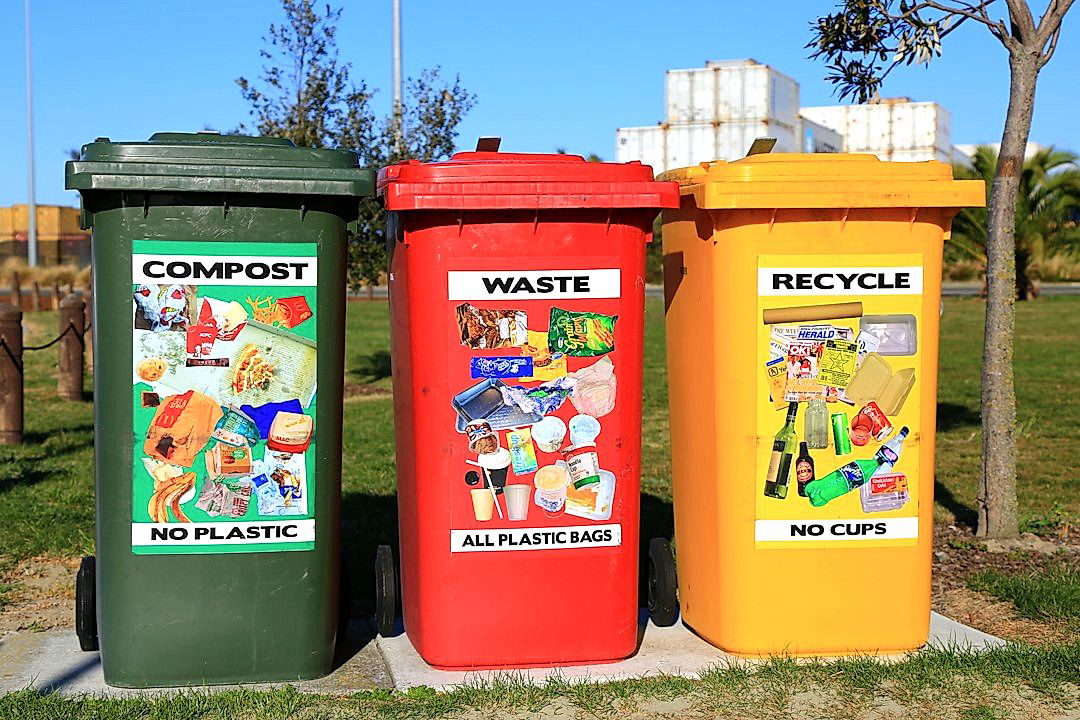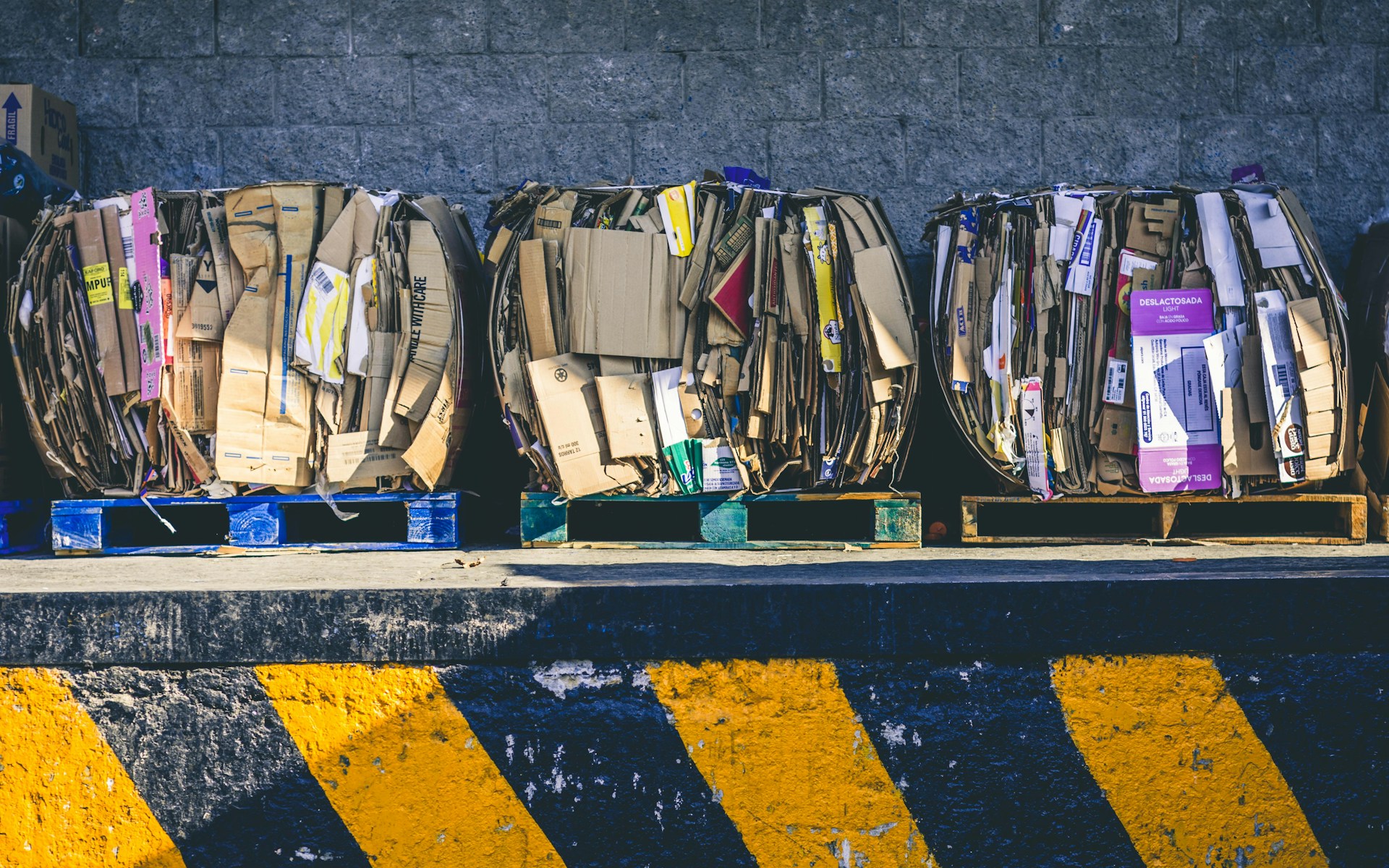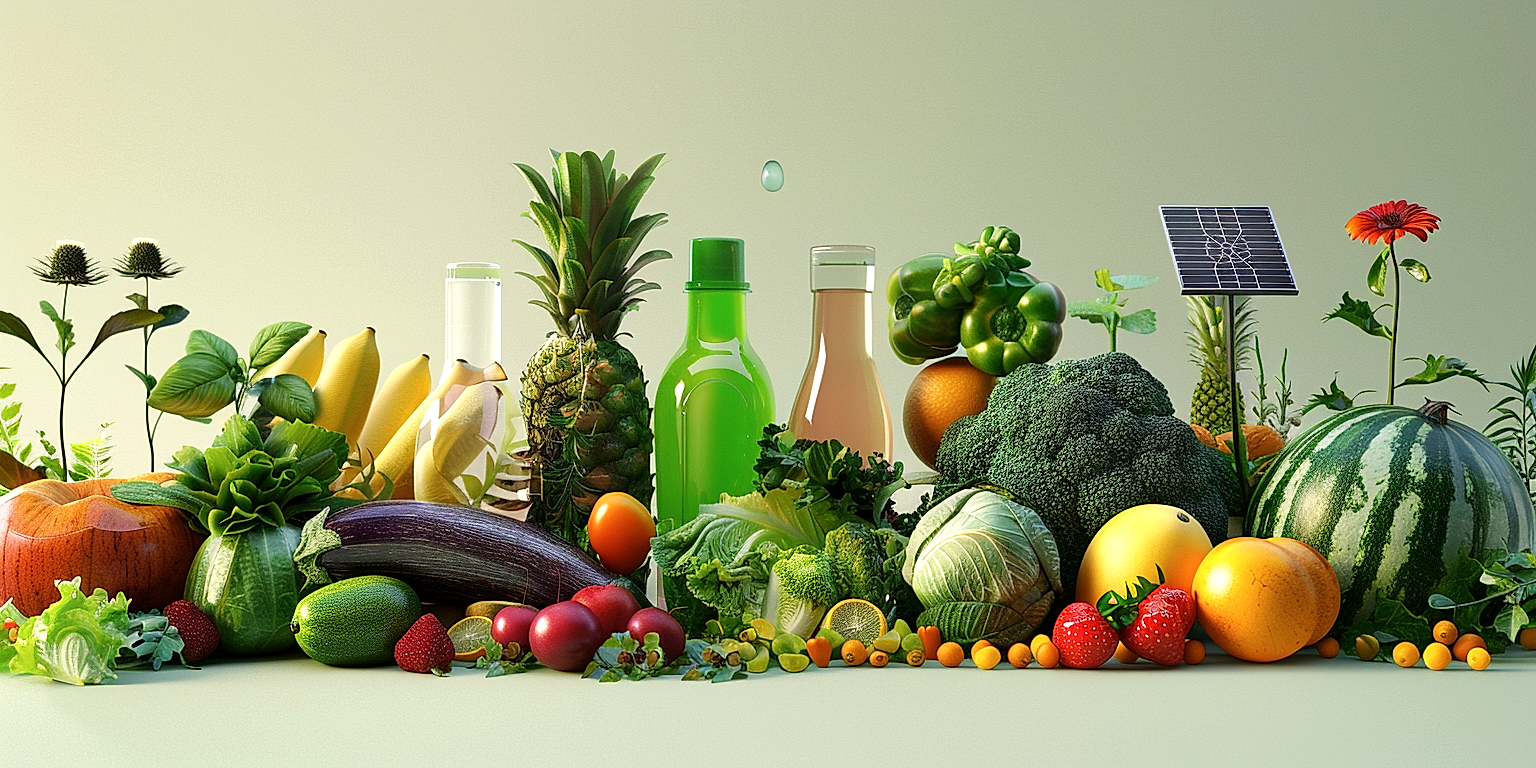In operating a produce-processing facility, waste management is an unavoidable concern that requires smart tactics.
An efficient approach to this issue does not only boost productivity but also aids in maintaining sustainable business practices.
As we look deeper into the specifics of waste reduction, it becomes clear that there are several suitable strategies available.
Optimizing these practices can have far-reaching implications for many aspects of a company, including cost efficiency, environmental impact, and even public image.
This article provides practical and applicable methods designed for waste minimization in this specialized capacity.
Our focus will be on the principles of waste management, as well as detailed examples and measurable outcomes of effective tactics.
Contents
- Practices For Minimizing Waste In Produce Processing Facilities
- 1. Implement strict monitoring of incoming produce quality.
- 2. Regularly maintain and repair processing equipment.
- 3. Enhanced Staff Training to Reduce Errors
- 4. Maximize Yield During Peeling and Trimming
- 5. Employ energy-efficient processing machinery.
- 6. Prioritize Use of Reusable and Recyclable Packaging
- 7. Integrate Composting of Organic Waste
- 8. Regular optimization of production processes
- 9. Coordinate Supply and Demand to Prevent Overproduction
- 10. Use waste material for value-added products.
- The Bottom Line
Practices For Minimizing Waste In Produce Processing Facilities
1. Implement strict monitoring of incoming produce quality.
For produce processing facilities, the quality and safety of their products are of utmost importance.
The most effective way to ensure this is through strict monitoring of their incoming produce.
Good quality of the input directly translate to the quality of output, thus minimizing waste.
This kind of scrutiny starts before the produce even arrives at the facility.
The quality of produce is more often than not, determined at the point of harvest.
This means that these facilities should have a hand in closely monitoring the cultivation and harvesting practices of their suppliers.
For the most part, this involves consistent communication with the farmers largely about harvesting times.
Harvest times of produce should be such that they allow for it to arrive at the peak of its freshness and optimal for processing.
Another pillar of strict monitoring is ensuring that the transportation of fresh produce is done under appropriate temperature and humidity conditions.
This is important as wrong temperature and humidity can cause the produce to spoil faster.
Upon arrival at the facility, a thorough and meticulous physical inspection should be carried out on the produce.
This will help in determining their suitability for processing and helps detect any signs of damage or infection that could potentially lead to waste.
Advanced technology, such as spectral imaging and machine learning algorithms, can also be used to achieve high-precision sorting and grading.
These technologies not only speed up the process but also significantly reduce human error.
Additionally, random samples from every batch of produce should be tested for common pathogens.
Through these steps, any low-quality produce that may affect the quality of the final product or cause waste during processing can be identified and discarded early.
The cost of such rigorous testing and inspection can be off-set by the savings made from reducing waste and maintaining a consistently high quality of processed products.
2. Regularly maintain and repair processing equipment.
Regular systematic maintenance and careful repair of processing equipment in produce processing facilities can effectively minimize waste and boost productivity.
One of the foundations for minimizing waste is preventing machine breakdowns, interruption of production flow and unnecessary equipment downtime.
Consistent equipment maintenance also extends the lifespan of the machinery, eliminating the need for frequent replacements and thereby reducing manufacturing waste.
Another beneficial effect of regular maintenance is ensuring that the machinery operates at peak efficiency, resulting in an economical use of resources.
However, it is important to have a robust maintenance plan in place to identify potential machinery faults before they escalate to major breakdowns.
This could include routine inspections, functionality checks, replacement of worn out parts, calibration of machinery, and consistent oiling and cleaning.
A well-maintained machine is less likely to cause defective products that would otherwise increase the volume of waste.
Economic losses due to reduced yield or discarding non-compliant products can be avoided through frequent and thorough equipment assessments.
Moreover, the use of advanced monitoring systems can play a significant role in predictive maintenance, identifying abnormalities in machine performances and anticipating impending faults that could lead to waste.
Importantly, regular maintenance and prompt repairs can also help ensure the safety of the employees, reducing the probability of work-related injuries and related wastes.
When repair is needed, focus should be placed on using high-quality spare parts that would last longer and reduce repeat repair work.
There should be a clear distinction between repairable and non-repairable machinery, to avoid wasting resources on irreparable equipment and instead investing in new models which can enhance productivity and reduce waste.
If a new piece of equipment is needed, proper installation and initial maintenance can ensure its optimal operation and help to prevent future breakdowns.
Maintenance practices may need adjustment and updating periodically, as the facility’s needs change and new technologies become available.
It’s also worth noting that the quality of maintenance work directly impacts the effectiveness of waste minimization efforts; so employing skilled technicians or outsourcing to professional service providers is a wise decision.
3. Enhanced Staff Training to Reduce Errors
One key aspect of waste minimization in produce processing facilities is the enhancement of staff training.
This practice ensures that the staff is proficient and well-versed in their daily tasks, resulting in a reduction of errors.
The most common form of waste in produce processing facilities is often result from human errors in handling, sorting, and processing of produce.
Thus, by improving the skills and understanding of staff through regular training programs, processing errors can be minimized significantly.
This, in turn, helps in decreasing the amount of produce wasted and increases overall productivity.
Moreover, it is important to keep the staff updated on the latest technologies and techniques in produce processing.
This can enhance efficiency and output, as well as reducing waste.
For instance, employees need to be trained on how to properly use processing equipment to maximize yield and minimize waste.
They should also be made aware of the importance of quality control and how their actions can directly impact the amount of produce wasted.
Furthermore, establishing mechanisms for continuous learning and development within the facility can prove beneficial.
Creating a culture of continuous improvement and learning can reduce the likelihood of repeat errors and encourage problem solving.
This not only optimizes the processing of produce, but also enhances overall operational efficiency.
Additionally, it would be beneficial to involve staff in decision-making processes and problem-solving activities, promoting individual ownership and responsibility for minimizing waste.
Such an approach can create a sense of accountability and dedication among employees, thereby contributing to waste reduction efforts.
Beyond mere training, it is vital to instill a mindset of sustainability among staff members.
They should understand their role in maintaining the facility’s commitment to minimizing waste and promoting sustainability.
4. Maximize Yield During Peeling and Trimming
In the context of produce processing, maximizing yield during the peeling and trimming phase is of paramount importance.
Often, a considerable amount of the product is lost during these processing stages due to inefficient or outdated techniques.
Fruits and vegetables, for example, can lose their nutritive value when peeled excessively, leading to a major waste of produce.
To reduce this, innovative technologies and strategies such as precision peeling and trimming can be utilized.
Precision peeling, for instance, involves the use of automation and sensing technologies to minimize wastage and maximize yield.
Trimming, on the other hand, can be optimized by training employees to trim only the non-edible or damaged parts of the produce, leaving the rest intact.
In addition to these, continuous monitoring and assessment of the peeling and trimming procedures can help identify areas of improvement.
For example, real-time data can be employed to make informed decisions about adjusting the peeling and trimming techniques.
Furthermore, yield-boosting techniques such as enforced machine cleaning and vacuum transport systems can be used to maximize recovery of small pieces and juices during peeling and trimming.
To ensure success, these techniques and strategies should be integrated with existing systems and processes in the facility.
This might require testing and fine-tuning, but the long term savings and reduction in waste will make the initial investment worthwhile.
Sustainability considerations should also play a key role in the choice of techniques; for example, energy-efficient and water-saving strategies should be preferred.
These measures, while improving yield during peeling and trimming, will also contribute to the overall goal of minimizing waste in produce processing facilities.
It is equally important to remember that the techniques and strategies put in place must be flexible enough to accommodate different types of produce and seasonal variations.
Compliance with safety and quality standards should not be compromised for the sake of maximizing yield.
While the goal is to minimize waste, it is essential to ensure that the produce delivered to the consumers is of the highest quality.
In conclusion, maximizing yield during peeling and trimming plays a significant role in waste reduction and helps facilities better achieve their sustainability goals.
5. Employ energy-efficient processing machinery.
In the quest to minimize waste in produce processing facilities, a crucial area for intervention is the employment of energy-efficient processing machinery.
Modern technology provides an array of machinery designed to save energy, ranging from solar-powered equipment to machines that efficiently convert energy.
The initial cost of procuring such machinery might come as a challenge to many businesses because energy-efficient machines tend to be more expensive than regular equipment.
However, the long-term benefits far outweigh these initial costs, especially in terms of energy savings and waste reduction.
Energy-efficient processing machines are inherently designed to consume less power while delivering high productivity, leading to a decrease in electricity usage and, therefore, energy costs.
Furthermore, these machines emit less greenhouse gases, contributing to not only reducing waste but also safeguarding the environment.
Gone are the days when businesses could rely solely on cheap equipment without considering the broader implications.
Today, companies that invest in energy-efficient processing machinery are seen as forward-thinking as they’re contributing significantly to waste reduction and environmental conservation.
The earlier a processing facility adopts the use of energy-efficient equipment, the quicker they witness its benefits.
The functional and operational sustainability of these devices ensures machinery longevity, subsequently resulting in fewer machines ending up in waste dumps.
Produce processing facilities have a crucial role to play in minimizing waste, not just in their operations but in the bigger sphere of global waste reduction and environmental conservation.
The investment decision is not only a commitment towards financial efficiency but also an essential step towards environmentally responsible production.
Becoming energy-efficient is a process that requires consistent effort and dedication to realise significant results.
Advancements in technology are consistently offering new ways to save energy and reduce waste.
Being open to these advancements and adapting/adopting them dutifully will play a significant role in minimizing waste in produce processing facilities.
6. Prioritize Use of Reusable and Recyclable Packaging
As part of waste minimization strategies, produce processing facilities are now focusing on the use of reusable and recyclable packaging.
This approach not only bolsters the company’s green credentials but it also significantly reduces overall waste management expenses.
Orders bound for retail shelves can have a significantly lowered environmental impact through the use of packaging that can be either reused or recycled.
It’s important to also educate consumers regarding the importance of recycling these packages to ensure proper waste disposal and adequate resource management.
>The shift towards using packaging derived from recycled materials can also lower the facility’s carbon footprint.
This move, however, requires a careful evaluation process of the packaging materials used in order to ensure they adhere to safety, quality and environmental standards without affecting the quality of the product.
It is crucial that the packaging material is robust enough to withstand processing, storage and transportation while, at the same time, being able to maintain quality and safety of the packed produce.
Options such as bags, crates, cartons or pallets made from reusable and recyclable materials are now readily available and in fact, being frequently utilized in the produce industry.
Opting for these materials not only reduces solid waste, but also saves money on packaging supplies as these materials could be used numerous times before the end of their lifecycle.
Produce processing facilities need to take into account that environmentally friendly packaging must be as cost-effective as it is sustainable.
>If the shift towards a reusable and recyclable packaging proves to be financially unfavorable, it could deter not only the processing facility itself but also the customers or vendors from buying and using such products.
Moreover, there must be a balance regarding the weight and volume of this recyclable packaging, as they can affect both the product’s pricing and shipping costs.
The ultimate goal is to use packaging materials that offer the best results for both economic and environmental aspects.
By prioritizing the use of reusable and recyclable packaging, produce processing facilities can exercise significant control over the waste they generate, thus playing an active role in resource conservation and waste reduction.
It’s the combinatory effort of sustainable practices like these that will lead to the ultimate goal – Minimizing waste in produce processing facilities.
7. Integrate Composting of Organic Waste
One of the effective practices for minimizing waste in produce processing facilities is the integration of composting of organic waste.
The process of composting involves the breakdown of organic waste materials like peels, seeds, and other plant residues into nutrient-rich compost.
Instead of piling up as waste, these organic materials can serve as an valuable resource that enhances the fertility of soils.
Composting organic waste reduces the quantities of waste that end up in landfills, thereby minimizing the overall waste production.
Combined with the benefits of enriching the soil, the composting of organic waste demonstrates a sustainable practice for minimizing waste in produce processing facilities.
Producing compost within the processing facility can present an opportunity for cost-effective waste management.
Composting equipment varies in capacity and complexity, offering a range of options for tailoring the composting process to the specific needs and size of the processing facility.
The quality and speed of composting operation depend largely on a few key factors: the type of organic waste, the balance of carbon and nitrogen-containing materials, moisture and oxygen levels, and temperature.
Proper maintenance of the compost pile or bin, including regular turning and maintaining the correct moisture and temperature levels, ensures a successful and efficient composting process.
Moreover, the compost produced in the facility can be repurposed for agricultural use, creating a closed-loop system, where waste is reused in a beneficial manner.
This practice serves not only to minimize waste but also to contribute to overall sustainability efforts.
However, it is important to ensure that the organic waste materials utilized in composting are free from chemical residues or toxins that might contaminate the compost.
Training staff in the composting process and the necessary precautions can help ensure the production of safe and effective compost.
Countless benefits arise from integrating composting into your waste management plan, from reducing waste volumes to producing valuable compost for agricultural purposes.
Notably, the integration of composting does require planning, effort and appropriate resources, but the benefits it offers make this a worthwhile practice in produce processing facilities.
8. Regular optimization of production processes
When discussing practices for minimizing waste in produce processing facilities, a key avenue to explore is the regular optimization of production processes.
This is an area where there is always room for improvement, and this constant quest for enhanced efficiency pays dividends in terms of waste reduction.
The production process in any facility, particularly one focused on processing produce, is a complex one with many moving parts.
Everything from the sourcing and storage of raw material to the processing, packaging, and shipping phases need to be meticulously managed and continually refined.
One of the easiest ways to minimize waste within these processes is by performing regular audits.
These audits help the management identify any inefficiencies, bottlenecks, or areas where unnecessary waste is generated, and on this basis, they can find ways to minimize waste.
The key here is not to see these audits as a one-time exercise but rather as a continuous process of optimization.
Another important aspect of this practice is the active use of technology.
Modern processing facilities have access to a wide range of technologies, which can greatly improve their efficiency and minimize waste.
From automated machinery to sophisticated software solutions for production scheduling, inventory management, and quality control, there are plenty of technological upgrades that can bring about significant improvements in waste management.
Training the staff is vital, as they play a significant role in both avoiding wasteful processes and enforcing energy-saving practices.
Trained staff members can more effectively operate machinery, adhere to proper procedures, and generally contribute to a waste-minimized environment.
Crucially, by optimizing processes and training staff, not only is waste minimized, but product quality is also likely to be improved.
Ultimately, regular optimization of production processes leads to improved efficiency and better alignment of supply and demand.
By continually improving and perfecting each facet of the production line, waste can be significantly reduced, resulting in an overall more sustainable operation.
Therefore, it is safe to say that regular optimization is one of the most important and promising practices for minimizing waste in produce processing facilities.
9. Coordinate Supply and Demand to Prevent Overproduction
One of the core strategies for minimizing waste in produce processing facilities is to effectively coordinate supply and demand to prevent overproduction.
This approach calls for a comprehensive understanding of the market demand for a particular produce, which can be achieved through meticulous data gathering and analysis.
Demand forecasting also plays a vital part here, combining historical patterns of sales with the current market trends to predict future demand as accurately as possible.
By understanding what consumers want and how much they are likely to purchase, facilities can adjust their production volumes to align perfectly with demand.
This not only reduces the likelihood of overproduction but also ensures that fresh produce doesn’t perish unsold, thereby reducing waste.
Proper coordination between supply and demand is a significant step towards a more sustainable and efficient produce processing operation.
On the other side of the equation is supply management- sourcing the appropriate quantity of raw materials based on anticipated demand.
By maintaining a lean inventory, facilities can prevent spoilage of fresh produce that has been harvested but not yet processed.
This calls for strong relationships with suppliers and a resilient supply chain that can respond swiftly to changes in production requirements.
Working closely with suppliers to synchronize their harvesting schedules with your processing timelines can lead to a reduction in produce waste.
Technology can greatly assist in this endeavor, with digital tools available to help manage inventory, track demand trends, and provide real-time data monitoring and analysis.
With these tools, it becomes easier to forecast demand more accurately, schedule production more effectively, and maintain optimal inventory levels, all of which contribute to minimized waste.
Additionally, coordinating supply and demand can also lead to other business benefits, such as improved financial performance, better customer satisfaction, and enhanced competitiveness in the market.
In a world where sustainability and efficiency are increasingly critical, coordinating supply and demand to prevent overproduction is a key strategy for any produce processing facility looking to reduce waste and improve its overall operation.
Undeniably, it requires considerable investment in terms of time, effort, and resources to implement and maintain, but the outcomes, both in terms of waste reduction and business performance, are well worth the investment.
10. Use waste material for value-added products.
One of the most impactful ways to minimize waste in produce processing facilities is by using waste material for value-added products.
This strategy not only reduces the waste generated but also provides an opportunity for additional revenue generation.
The food waste currently disposed of can inherently contain valuable components that can be extracted and utilized in various ways.
Beyond just reusing or recycling, this strategy leverages the concept of the circular economy, where waste materials are not seen as trash but as resources for creating new products.
For instance, peels, seeds, and pulps that are often discarded during fruit and vegetable processing can be turned into nutrient-rich fibers or concentrates.
These byproducts can be utilized in the production of food supplements, animal feed, organic fertilizers and more.
Likewise, waste water generated in the processing facilities contains residual nutrients that could be valuable for other processes.
This waste water could be treated and repurposed for irrigation, or the nutrients can be extracted and used for fertilizer.
Moreover, food waste can also be used as a source of energy.
Through a process called anaerobic digestion, organic waste can be converted into biogas, that can be used for heating, electricity production or even as vehicle fuel.
It is important to explore partnerships with other industries or sectors that can utilize your waste in their processes.
Collaboration not only helps in efficiency but also in driving innovation in waste resource utilization.
For example, a partnership between a produce processing facility and a microbrewery could lead to the exchange of waste products beneficial to both parties.
Regardless of the specific application, making use of waste materials for value-added products transforms produce processing facilities into sustainable and circular entities, promoting environmental stewardship while enhancing economic viability.
This proactive approach not only tackles the issue of waste minimization but also positions these facilities as pioneers in the sustainable practices arena.
Transforming waste into value-added products is thus a win-win strategy that significantly reduces waste footprints and creates new avenues for profitability in produce processing facilities.
The Bottom Line
Through vigilant quality control of incoming produce, ongoing maintenance of processing equipment, extensive personnel training, and optimizing yield during processing stages, the food industry can drastically enhance efficiency and quality.
Transitioning to energy-efficient machinery and prioritizing recyclable packaging contributes to environmental conservation.
Also, by integrating composting of organic waste and utilizing waste material for value-added products, waste management can be significantly improved in the sector.
Furthermore, continuous process optimization and balance of supply and demand can significantly reduce overproduction, contributing to overall sustainability.
Thus, adopting these strategies can significantly improve both operational efficiency and ecological responsibility within the food industry.




